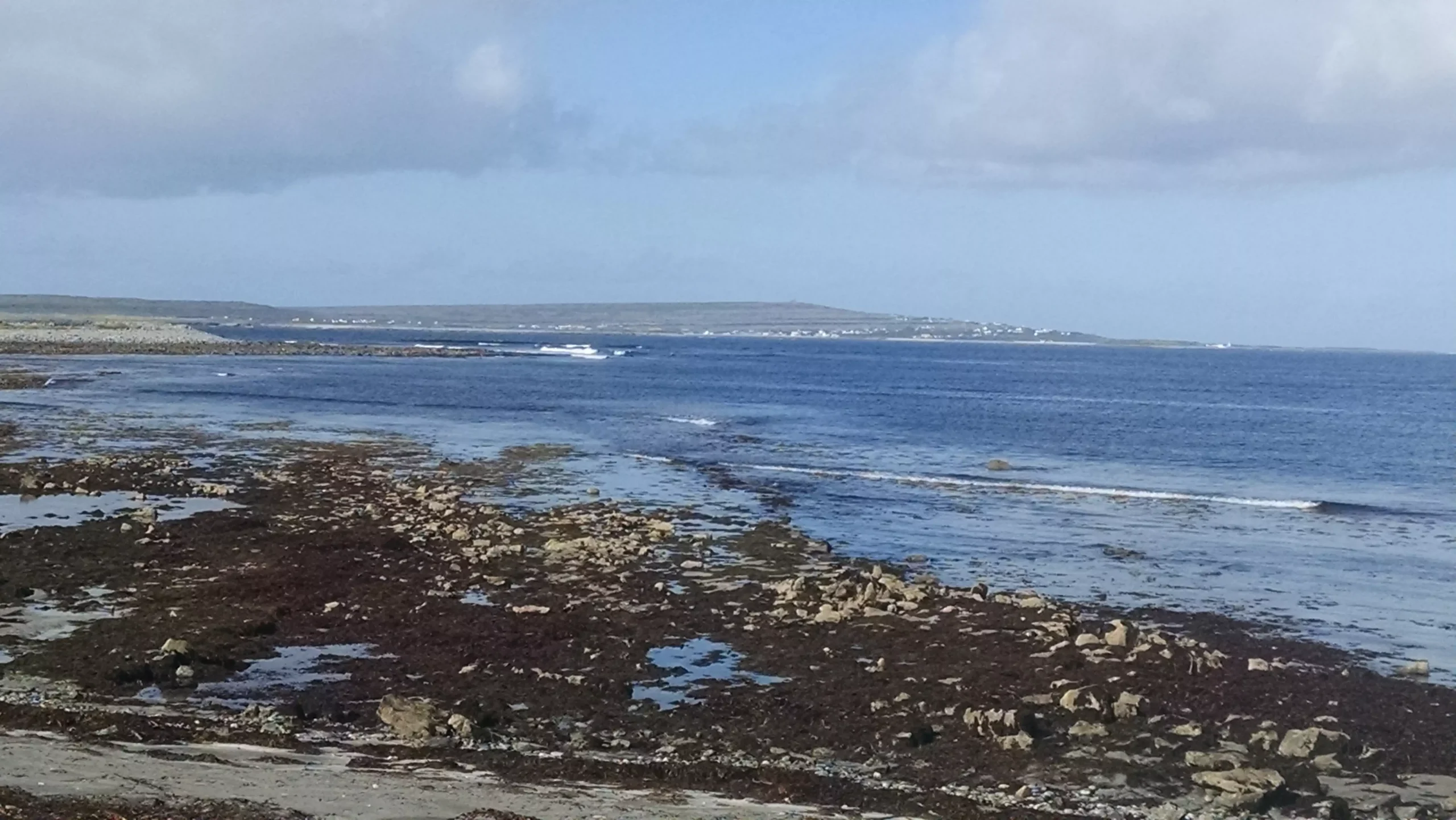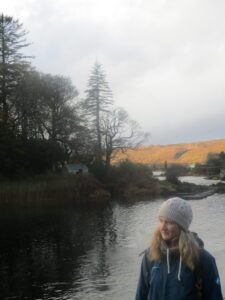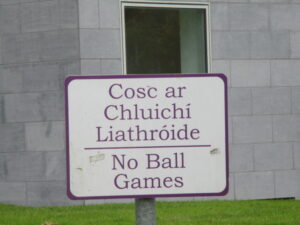Loving the Irish Language



Dia dhaoibh! An bhfuil an Ghaeilge agaibh?
San ollscoil nó ag spaisteoireacht, you’re bound to encounter the Irish language one way or another, and it can come as a bit of a surprise. It’s sometimes a point of confusion; many people outside of Ireland may not even be aware that a native language still exists (isn’t it just English with an accent?), or the importance of its survival. Others may have encountered it once or twice, in a name like Saoirse or Niamh, and believed the whole language to be nonsensical, with a grammar based on spite. These notions couldn’t be farther from the truth.
As a word and language aficionado, my ongoing love affair with Irish started almost two years ago, but whatever brings you here, there’s room in your life for a cúpla focal in this beautiful, misunderstood language.
So what is Irish, anyway?
This question might be better answered if I tell you what Irish is not. For one, it isn’t a separate form of English, though you’ll definitely still hear lots of that around Ireland. It’s also not Gaelic, as it’s often called; that name belongs to the native language in Scotland, Gàidhlig.
Say Gaeilge (gwayl-guh, if you’re going by English pronunciation), or simply Irish, and you’ve got it. Like many languages across Europe and south Asia, Irish is classified as Indo-European, a member of the Celtic family alongside Welsh, Manx, Cornish, Breton (spoken by a small number in Northwestern France), and Scots Gaelic, previously mentioned.
What makes Irish unique?

One thing that makes Irish unique is its place among European languages. Aside from its relative distinctiveness as a Celtic language, it was among the first vernacular languages used for writing. Before written Old English was an inkling in anyone’s mind, medieval Irish monks were using the Roman alphabet, transcribing poetry and religious works into their native tongue.
This Irish language, though, had far more sounds than Latin had symbols (v, w, a guttural ch), and rather than trying to add letters or standardize a new script, these monks transformed and adapted the rules of their syllabary, using combinations like mh or dh for the letters Latin lacked. Due to this spelling-pronunciation gap, English speakers seem to often feel Irish is an exceptionally difficult language. There are plenty of YouTube videos challenging subscribers to pronounce Irish words, and the first week at NUI Galway, one of my lecturers even jokingly offered us money to correctly say and spell his surname: Ó hAisibeil.
The reality is, while it can seem daunting, all languages have their own rules of pronunciation, and are unique from one another. I promise you: if you can train your mind to understand a word like tortilla, Jacques, or Wienerschnitzel, with pronunciation not related to English, you can learn to handle Irish names like Medb (Maeve) with confidence.
Where is Irish today?
The centuries-long struggle between Great Britain as an imperial power and Ireland as a subjugated colony was largely about identity: religious, ethnic, and so on. As such, use of the Irish language itself became political, often repressed by educational and legal systems. A disdain for Irish culture, combined with a number of thwarted rebellions, pushed a shrinking community of native Irish speakers to the westernmost, least fertile parts of Ireland. As this population shrank in turn due to famine and mass emigration, so did regular use of Irish.
Today, though English is widespread, Gaeilge remains the Republic of Ireland’s official language. Political parties borrow their slogans from it, as does daily life in and out of the Gaeltacht areas (pockets of Irish-speaking community dotting the western coast). It’s taught in both the Gaelscoileanna and public schools, and some young people in Irish-medium summer programs like Coláiste Lurgan are even revitalizing their language through creative means like pop song covers!
Why learn Irish?
You can spend your entire time in Ireland without speaking a word of Gaeilge, but why would you want to? At the very least, learning a cúpla focal (couple words) helps with reading street signs and even understanding some particularly Irish slang. You might hear something like Sláinte (health, or cheers!) or tóg go bog é (chill out!) in pubs and shops around the country, for instance, or find that knowing Irish helps you accurately read street signs as you explore the country. Apart from this, though, there are so many ways Irish can enrich your time in Ireland.
For one, it’s a way of getting to know people. At times, it was difficult to really connect with Irish students at my university; they were as busy as I was, and I was only here for a semester. A weekend in the Carna Gaeltacht, though, offered me not only the chance to sharpen my language skills, but to enjoy a homestay with an Irish-speaking bean an ti. My experience abroad wouldn’t have been the same without it.
And in the end, languages are simply another way of interpreting the world. People who speak a different language see things differently, and nowhere has that been clearer for me than in Irish; you don’t have a possession, for example– it’s at you, and a sickness or emotion are on you. To understand something new about a people in this way is, in my opinion, the utmost privilege, and follows you wherever you go.
So sin é— that’s it. I hope you’ve learned something new. Maybe you’re more excited now to learn Irish, or maybe you’re considering language immersion somewhere else, to more fully connect with a group of people. Whatever you do, I hope it’s just as amazing. Ádh mór ort, agus slán go foill.
Sketch R. M. | Language Enthusiast and Interdisciplinary Narratives & Creative Process major | University of Redlands, Johnston Center | University of Galway Partnership in Ireland | Fall 2017 | IFSA International Correspondent